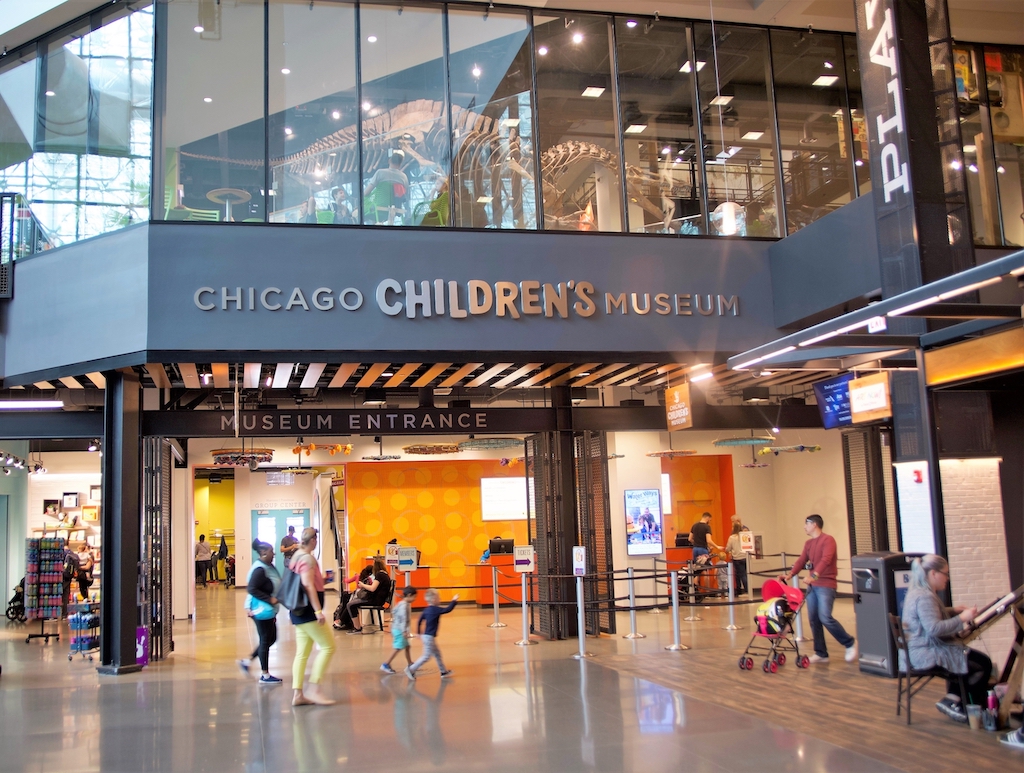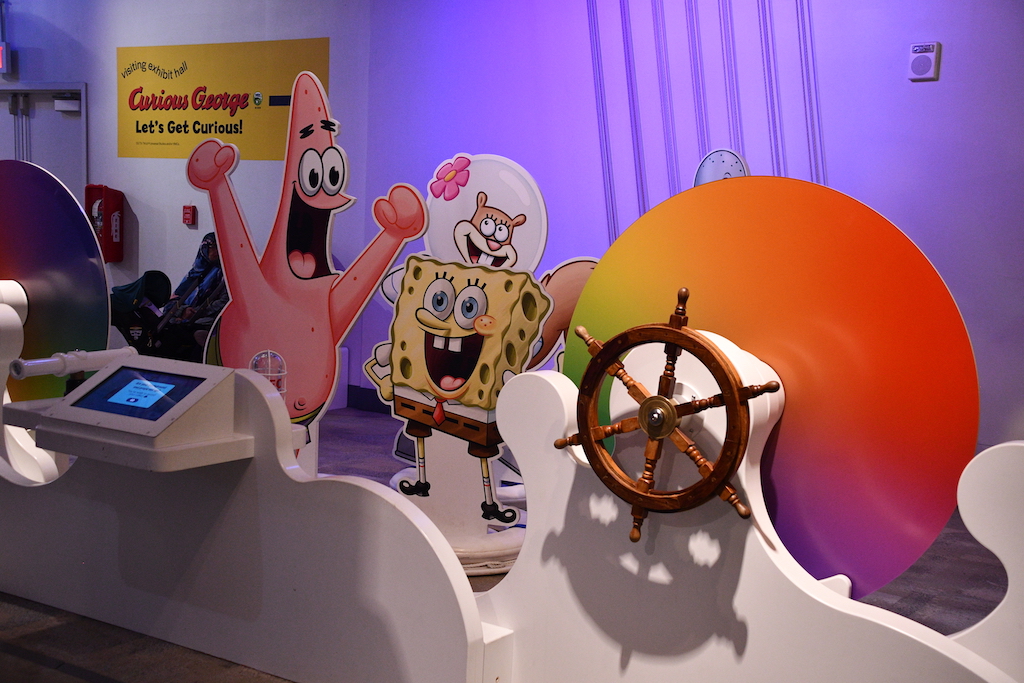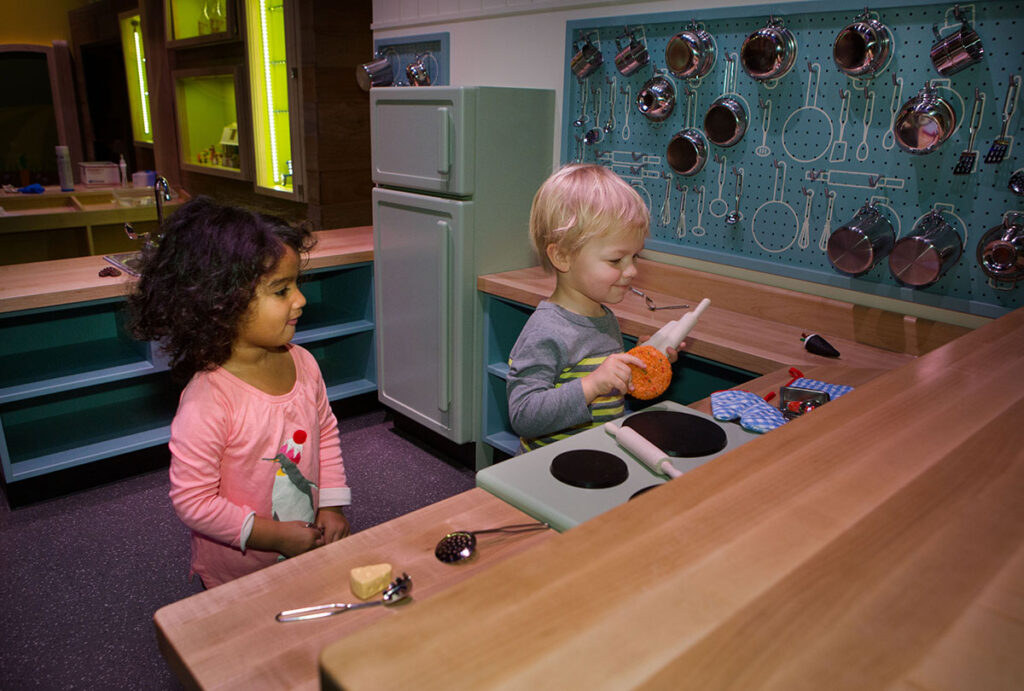Exploring the nation’s best children’s museums

Nearly 500 children’s museums now offer families a path to talk to young children about complex issues
By Eileen Ogintz
Tribune Content Agency
Taking the Kids
Let’s talk about what kids can do about climate change, even if they aren’t in kindergarten yet.
The National Children’s Museum in Washington, D.C., celebrating its 50th anniversary, has just launched its Climate Action Heroes exhibit distribution project in partnership with Nickelodeon Our World. Through this project, children’s museums and science centers across the globe will be able to receive complimentary access to a re-imagined version of the museum’s exhibit that integrates beloved Nickelodeon characters, including Spongebob Squarepants and Dora the Explorer. By answering a maze of playful questions, children are matched with one of five hero personas with unique superpowers. Through a suite of digital extension tools, including a digital exhibit headquarters with monthly missions, virtual field trip, at-home activity videos, and podcast episodes, children are encouraged to practice their superpowers in their community.
There are nearly 500 children’s museums in the country and many now offer families a path to talk to young children about complex issues in a way they will understand, as well as provide a safe place to play and learn for kids of all abilities.

The You, Me, We! exhibit at the Boston Children’s Museum encourages families to connect around questions of fairness, stereotyping and discrimination. Explore soil, leaves, veggies, worms and more at the Fenway Farms at Boston Children’s Museum, a replica of Fenway Park’s rooftop garden at the museum. Kids can learn about local plants and share their own gardening and food stories.
The museum just opened Hundred Acre Wood: A Winnie-the-Pooh Experiencecomplete with a chance to pretend to play in Rabbit’s Garden and Piglet’s Patch of Grass.
Check out a children’s museum where you are traveling this summer, and you likely will find hands-on exhibits that appeal to older grade-schoolers too. Look for the many hands-on STEM activities now offered.
Check the association of children’s museums to find one near where you plan to visit. Your membership at your local children’s museum may get you in for free.
The Chicago Children’s Museum’s Play for All initiative (from June 1 to Aug. 3) creates a community where play and learning connect for visitors of all abilities. The Circusville exhibit (through Sept. 7) invites different experiences, whether you enter the center ring, backstage and more as kids play dress-up, try juggling or balancing on a tightrope. Don’t miss the exhibit that explores the science behind Chicago’s skyscrapers.

In Kansas City, the new Rabbit Hole celebrates and brings to life a century of American children’s literature for visitors of all ages. Spanning three floors, the Rabbit Hole brings countless works of children’s literature to life. Visitors become explorers in an immersive, multi-sensory, narrative landscape, including Curious George, Babar the King, Strega Nona, Caps for Sale and many more. There are also book-making workshops, writing labs, professional opportunities for educators, exhibit-related performances, national and local author events, residencies, and a multitude of hands-on, literature-based art-making activities.
And in Gettysburg, Pennsylvania, Children of Gettysburg 1863 explains the Civil War’s famous battle with activities and lessons focused on the children who were there. The museum is housed in the historic Rupp House where in 1863 John and Caroline Rupp lived with their six children. Find a place to hide during the battle, see what a soldier carried and more.
The Brooklyn Children’s Museum is the oldest in the country, dating back to 1899, while the massive Children’s Museum of Indianapolis, the world’s largest, is often ranked number one as the best for kids.
Both offer exhibits that can spur conversations with young children and help them to better understand the world around them.
World Brooklyn at the Brooklyn Children’s Museum, for example, lets kids play in kid-sized shops based on real ones in Brooklyn’s multicultural neighborhoods, helping them to better understand the importance of such diverse communities as they become storekeepers, bakers, shoppers, grocers and more.

At the Indianapolis Children’s Museum, the Power of Children shares stories of Anne Frank, Ruby Bridges, who in 1960, as a first-grader, was one of the first Black students to integrate the white New Orleans school system, and Ryan White, who in the ’80s fought fear and misinformation about AIDS.
Ryan contracted AIDS through a blood transfusion to treat his hemophilia and fought to be allowed to return to school after being suspended, making him famous around the world. Learn also about Malala Yousafzai, the youngest person ever awarded the Nobel Peace Prize, who has fought for the education of women and children in northwest Pakistan where the Taliban had banned girls from school.
Put yourself in the shoes of a child who changed history or discover how you can become an “everyday superhero.”
Also seek out special exhibits and discovery rooms in larger art and science museums. Philadelphia’s Franklin Institute, for example, has the art of the brick by artist Nathan Sawaya that is a collection made exclusively from LEGO bricks, complete with a 9,000-square-foot brick play space.
The Seattle Museum of History and Industry has a Kid-Struction Zone designed for kids 2 to 7 and their caregivers, enabling the littlest builders and architects to build with Duplo’s, work at the tool bench, magnet boards and felt table.
In San Francisco, the California Academy of Sciences has CURIOSITY GROVE. The animal murals illustrate California’s diverse forest ecosystems while the interactive science-themed games and toys are designed for little learners. Don’t miss the new interactive California: State of Nature, which explains the connections between people, places and animals.

And in Washington, D.C., the National Museum of American History boasts Wegmans 1,700-square-foot Wonderplace, the first exhibit on the National Mall designed for children 0 to 6. There is a crawler area for children just learning to walk complete with large mirrors, a portrait gallery devoted to children with reproductions from the museum’s collections, a farm where children will learn where food comes from, a mini kitchen modeled after Julia Child’s kitchen, and more.
Just one caveat: leave when the kids get tired and hungry. There’s always next time.
(For more Taking the Kids, visit www.takingthekids.com and also follow TakingTheKids on Twitter, Facebook and Instagram where Eileen Ogintz welcomes your questions and comments. The fourth edition of The Kid’s Guide to New York City and the third edition of The Kid’s Guide to Washington D.C. are the latest in a series of 14 books for kid travelers published by Eileen.)
©2024 Eileen Ogintz. Distributed by Tribune Content Agency, LLC.
